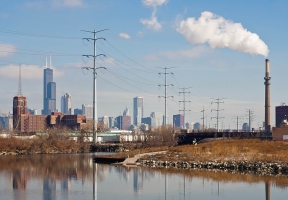

By: Ashmar Mandou
On Wednesday, the Little Village Environmental Justice Organization held a press conference to discuss the one-year mark of the release of the Little Village Industrial Corridor Modernization Plan (LVICMP), which was produced by the Department of Planning and Development (DPD). The LVICMP was the result of a nine-month process, during which LVEJO advocated for a significant increase in environmental health protections for the community, as well as much stricter regulations and enforcement on current industries in the area. According to LVEJO, many organizations and community members submitted public comments regarding their displeasure with the plan, the process was halted.
“We’re at the one-year anniversary of the halting of this process, and we still do not have clarity from the DPD on whether or not the process will continue. Meanwhile, new industrial developments continue to be approved in the neighborhood with minimal regulations. Little Village already has the second worst air quality in the state, and is in desperate need of a modernization plan that effectively regulates industry, and prioritizes the environmental health of the community,” said a LVEJO rep. LVEJO is demanding the following from the City:
• Commitment from the Mayor’s Office and DPD to restart the Little Village Industrial Corridor Modernization Process. The city needs to make sure current industries in our neighborhood are brought to standards and move towards a just transition.
• The City needs to install permanent air monitors in the cumulative burden of environmental exposures neighborhoods. Residents have the right to learn about the air quality around them;
• The Chicago Department of Public Health needs to increase research efforts to monitor the environmental health of its communities. Their lack of air pollution enforcement is due to insufficient data and inadequate protocols for how to prioritize the highest-risk facilities for inspection.












